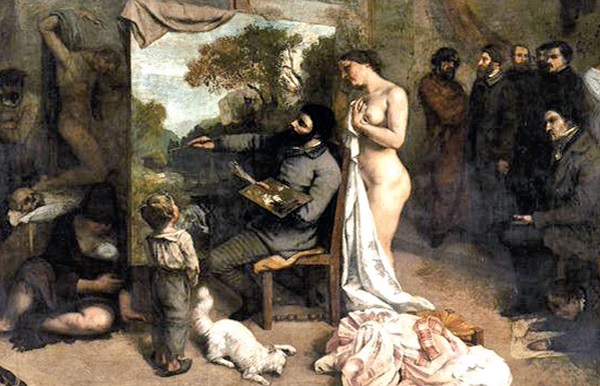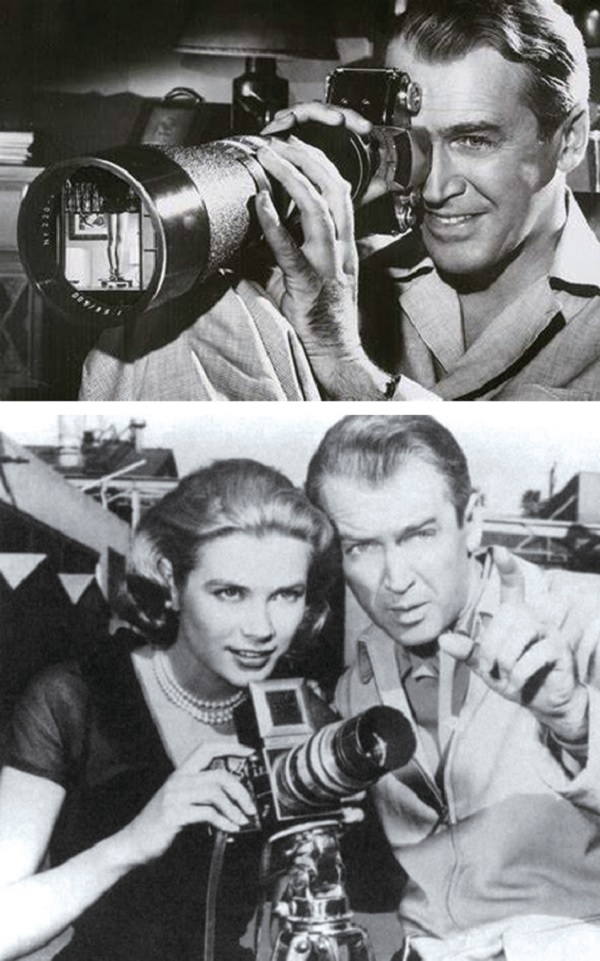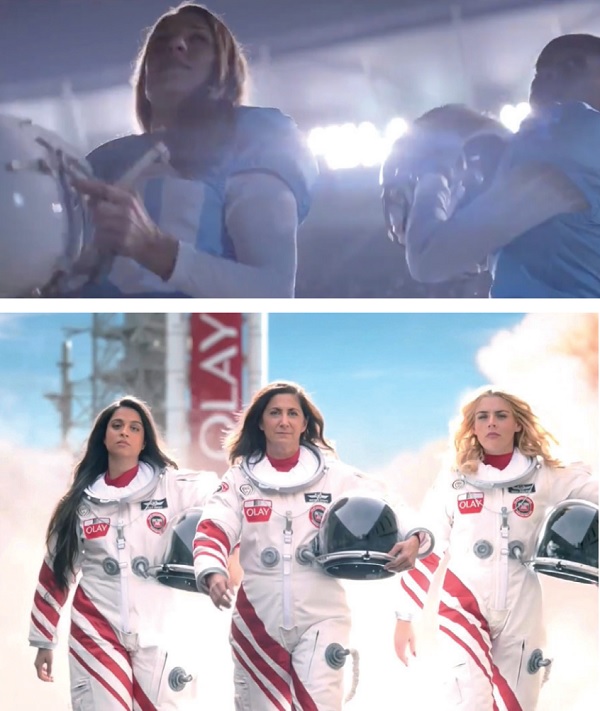Gender and gaze in images
【Image Interpretation】Series 6

Who has more power, the viewer or the person being viewed? As mentioned in the previous article, if the viewer unilaterally accepts the impact of the image without reflection, will it be affected by the social and cultural discourse conveyed by the viewer, thus giving up the power to interpret the image?
So, who is the real viewer of the image? While appreciating art, can we look more closely at the hidden and preset relationship between the viewer and the viewed?
Men act, women show
The most explicit displays of nudity in Western art history are during the Renaissance and Neoclassicism. However, nudity in art has always appeared in social relations and gender relations in any period. Have you ever wondered why?
If you want to develop visual literacy and make some interpretations of images, you cannot simply accept all nude images in art by saying "because they are nude because of art".
The interpretation of this image actually contains the design of "seeing". Viewers need to understand: Who is the intended audience of nude art? In what way does the nudity theme attract the intended audience? What is the relationship between artist and model, artist and patron?
The most famous theory in this regard is proposed by cultural and art critic John Berger. He said this important observation can be summed up in a simple sentence:"Men act, women show." (Men act and women appear.) 1

Berg believes that in the average European nude painting, the real protagonist never appears. The protagonist is the viewer in front of the painting, and he is assumed to be a man. Everything is created for Him, everything must seem to exist for His presence. It was for him that the characters in the painting were shown naked. 2
Therefore, men watch women, and women watch themselves being watched. This not only determines most relationships between men and women, but also includes the relationship between women and themselves; the appraiser in a woman's own body is the male. The painter has his own unique way of expressing women: naked, passive, sexy and seductive, like a landscape waiting for criticism. 3
This has to do with art business practices, social roles of men and women, and gender stereotypes. 4 Because in society, the main earners or workers have always been men. Men dominate social power, and most art collectors and viewers are men.
This has led to a particularly large number of paintings of female nudes, in which women pose and look provocatively, which is of course intended for male viewers. Berg said that this way of representing women also constructs accepted masculinity, which is understood as gender difference and becomes part of a wider cultural construction.
The same goes for movies. Filmmaker and playwright Laura Mulvey's 1975 paper "Visual Pleasure and Narrative Cinema" discussed that the images of women in traditional Hollywood films are based on the patriarchal subconscious. To construct the convention of popular narrative films, the women represented in the film are only the objects of the "male gaze". 5
Men use women to watch
Alfred Hitchcock's film Rear Window (1954) is the most commonly used example of gendered viewing. In the film, the male protagonist Jeff, played by James Stewart, is a photographer who broke his leg and was trapped in a wheelchair. He had to rest in an apartment in New York.
He spent most of his time sitting in front of the window, from which he could see the daily life of some people in the apartment across the street. Because he was engaged in photography, he could watch through a long lens. One day, he thought he had witnessed a murder. The male protagonist's viewing angle, in some respects, replaces the movie audience, just like sitting in a movie theater, limited to one angle and one fixed position. If he is a voyeur, then when the audience sits in a dark cinema and watches a movie, they are actually peeping into other people's lives.
The rows of windows across the street from the apartment are also like frames for photographic lenses, limiting how much the actor can see. So he has a desire - to see more. His girlfriend Lisa, played by Grace Kelly, becomes his personal eye, acting as a private detective who goes to the apartment opposite to investigate his suspected murder. She secretly climbed up the fire escape, looking for clues to the murder beyond the window frame and under the screen. That's what the audience doesn't see. Women disappear from the male gaze, which is a breakthrough from the traditional gender gaze.
The women in the film understand the patriarchal structure and know how to threaten it. She had her own interpretation of what happened to the neighbor across the street, and it was later confirmed that she was correct (details withheld to avoid spoilers). The male protagonist gains power from watching, but is restricted from movement by his wheelchair. He must rely on a woman's eyes and feet to obtain more confirming information. This is where Hitchcock is great. He subverts the traditional structure and shows that the male gaze is actually not that powerful and controlling.
But the hero is not only frustrated by wanting to know more, but also punished by watching. Once the murderer discovers the spying behavior of the male protagonist opposite him, the male protagonist is in trouble and unable to defend himself, because the murderer will come and silence him. The male viewing behavior in the film does not exempt him from the restrictions and consequences. In the end, a series of developments such as the heroine's rescue must be relied on, subverting the typical settings of gender roles, and there are many things worth exploring.

▲The movie "Rear Window" subverts the typical settings of gender roles based on who is watching and what they see.
(Image Source:https://www.facebook.com/RearWindowFilm/)
empowered to act
Many contemporary advertisements still sell products through traditional gender codes, asking women to pose in various seductive and provocative poses for the possessive male gaze.
In recent years, advertising has also begun to go against tradition, using role reversal to show men as the objects to be watched. Then there is a big reversal of "men act, women show": women can also act and are the controllers of the power structure; ignore the gaze of the viewer, make their own decisions, empower themselves, and challenge the traditional definition of women's roles .
In the past, the fairy tale elements in advertising were women waiting for the arrival of men. But in an advertisement for CHANEL N°5 perfume, it is men waiting for women and longing for women.
The advertising script is a parody of the movie "Roman Holiday", in which a member of the royal family played by Nicole Kidman comes to the public and meets the male photographer. What’s interesting is that it was through him putting down the camera lens that this woman truly got to know her true self. It turns out that this is a woman who does not want the aura of royalty, but just wants to dance happily and live a peaceful life. Later, the woman needed to go back because of responsibilities and obligations, but they would never forget each other. Obviously, the women in this advertisement are at the top of the social power structure, while the men have become nobody, a nameless nobody.
The annual American Football Super Bowl game in the United States is prime time for advertising. Many of the advertisements published in the past catered to men and demeaned women. Some of the unsightly and vulgar advertisements featured sexy women in provocative poses. You might think this is because the audience watching football is mainly male. In fact, half of the audience is female. Frequent advertisements for Carl's Jr. (fast-food chain) and Victoria's Secret emphasize again and again that a woman's value lies entirely in her youth, beauty, and sex appeal. There are also advertisements for snacks, cars, beer, etc., which imply that the way for women to attract men's attention is "sex."
Many feminist organizations protested, and the advertising industry began to realize that in 70-80% households in the United States, it was women who made purchasing decisions. Therefore, female empowerment ads can be seen starting in 2020. The 2020 Super Bowl Olay advertisement has the theme of "Make Space for Women". In the 30-second video, after the three heroines ascend into the vast and boundless space, their lines describe that there is a lot of space in space. , of course there must be room for women.

It was said before that "men act and women show." Now women not only act, but can also go into space. There is actually a female astronaut making a cameo appearance among the heroines.
In the 2020 Secret deodorant "Let's Kick Inequality" ad, women can be seen reappearing from viewers to players. In the past, few women appeared on the screen between the two, and the advertisements assumed that men were the main audience.
Kicking inequality out of the secrecy, this ad theme has a double entendre. Kicked away is a pun on kicking the ball. Where's the secret? Victoria's Secret sells women's underwear and has been a popular advertisement during the past Super Bowl. Now, women are required to play in a stadium that has always been a man's world. They also kick out this type of advertising that is dominated by men. This means kicking out gender inequality. Launching advertisements that mainly target female audiences also strives for a place for women on the sports field. .
In today's advertisements, more and more men are being viewed. However, women must also be careful not to overdo it and make women too hegemonic. In this way, the gender and gaze of the image deeply affect the viewer's view of gender. Many people unconsciously compare their self-image with the gender images on advertising boards, TV, and movies, and decide between beauty and ugliness. This is a gender net cast all over the sky, catching many viewers who are unaware of it.
I hope that we Christians can develop the insight of visual literacy and see through the placement of gender in images.
Note:
1. Ways of Seeing by John Berger, page 47 (NY: Penguin, 1972).
2. Ibid., page 54.
3. Ibid., page 47.
4. “Modernity and the Spaces of Femininity” in Vision and Difference: Femininity, Feminism and Histories of Art by Griselda Pollock, pages 70-81 (NY: Rouledge, 1988).
5. “Visual Pleasure and Narrative Cinema” in Visual and Other Pleasures by Laura Mulvey, pages 14-26 (Bloomington: Indiana University Press, 1989). Originally published in 1975 in Screen.
Could it be, senior writer. He is currently the director of the "Genesis Literary Training Bookstore", specializing in promoting the literary and cultural vision for the Kingdom of God, cultivating and shepherding literary workers. His book "Throwing a Figure in Eternity" won the 2012 Tangqing Literary Award. Other essays have won Taiwan's "United Press Literary Prose Award" and "Liang Shiqiu Literary Award". The novel has won the "Bing Xin Literature Award" in mainland China and the "Religious Literature Award" in Taiwan. He is the author of the text ministry series "Your Story, Your Heritage", "The Influence of Heaven, God's Time", etc. My lifelong dream is to see the realization of "all people reading" and "all people writing" among Christians.
